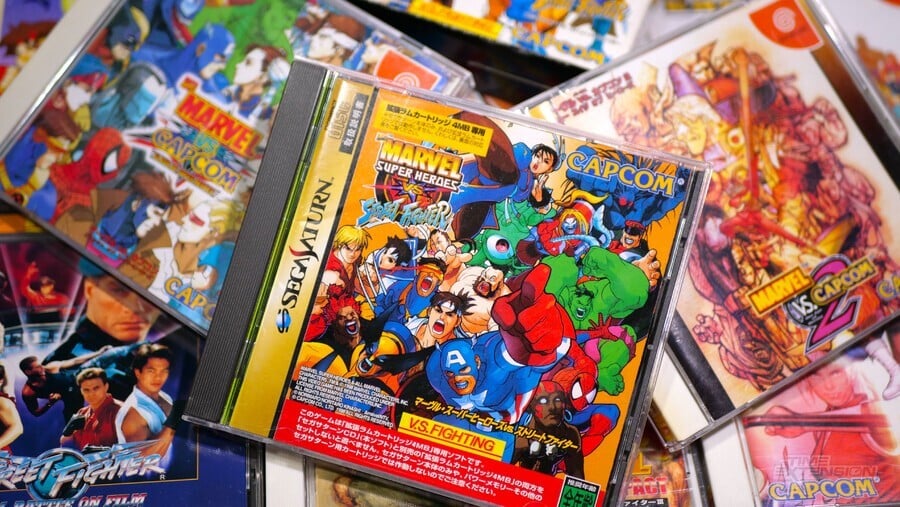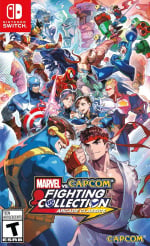
Capcom's excellent Marvel-related fighting games are back in the spotlight thanks to the welcome release of Marvel vs. Capcom Fighting Collection: Arcade Classics, and Atsushi "Tomichin" Tomita – who worked as a planner on many of those titles – has taken to social media to talk about how the first 'vs' game (X-Men vs. Street Fighter) came to be.
Tomita reveals that within Capcom, there was some initial resistance to the idea of mixing Marvel characters with the world of Street Fighter, as neither X-Men: Children of the Atom nor Marvel Super Heroes were commercial hits in Japan, despite being popular in North America.
Tomita reveals that X-Men vs. Street Fighter was very nearly called X-Men 2, but when the choice was made to introduce Street Fighter characters, the title was changed.
"After X-Men and MSH were finished, the producer who was promoted from sub-planner to main planner for the sequel, X-Men 2, half-laughed at the list of characters that would appear," says Tomita. "Half of them were Street Fighter Zero characters, so he thought that if the title was X-Men 2, it would be a misrepresentation, and voluntarily changed the title to X-Men vs. Street Fighter."
Because the previous Marvel games hadn't been big hits in Japan, this crossover didn't actually get a lot of support within the walls of Capcom. "It didn't get any attention within the company, with some saying, 'I hope this game will quietly disappear without anyone noticing (because it tarnishes the Street Fighter characters),'" recalls Tomita. "Thanks to those comments, I was able to create it with a lot of freedom. I wanted to show how powerful this system is!"
The introduction of Street Fighter characters had the desired effect in Japan, where X-Men vs. Street Fighter gained a lot more recognition than the previous Marvel titles. "They didn't change the basic gameplay, but instead added a switching system on top of it, and used up the short development time by single-mindedly pursuing flashy, satisfying, and mind-blowing presentation and a fast-paced, satisfying gameplay feel," continues Tomita.
He also goes into detail about how Capcom made sure the Street Fighter characters could hold their own against the world's most famous superheroes in terms of special moves. "At the time, all the character designers wanted to create humans, so effects were pushed onto newbies as a chore, but our team's effects specialist, my partner (Sagata), was unusually fond of effects and good at them, so we thought we could compete if we invested our capacity in this, and we decided to add new effects to all of the Street Fighter Zero characters," Tomita says.
"The first thing my partner showed me was a yoga fire that reached the edge of the screen, and I really didn't know what to do, but when he showed me something so amazing, I had no choice but to say OK, and we'd work out the balance later. So we started criticizing each other for the plain, unimpressive effects, and things escalated. The bullets used by Ryu's Hadoken were originally made to be used as bullets for the Shinku Hadoken. The Hadoken shots were smaller bullets, but as they were making flashy effects for other characters, they realized that these were a bit plain, so they had no choice but to shoot a beam! Shinku Hado Beam! And so the modern-day Shinku Hadouken was created."
The planner adds that the game got such a good reaction from arcade location tests that a sequel was explored before X-Men vs. Street Fighter had even been finished.
"We didn't have time to do the balance adjustments, but the game was so well-received during the location tests that we were asked if we wanted to make a sequel before development was finished," he says. "This was originally going to be MSH2, and was supposed to be handled by a senior planning staff member. (That person was called in to help the Vampire Savior and never returned.)"
That sequel was, of course, Marvel Super Heroes vs. Street Fighter. Capcom then followed up with Marvel vs. Capcom and Marvel vs. Capcom 2, both of which have become beloved classics.
Our pals over at Nintendo Life and Push Square both loved Marvel vs. Capcom Fighting Collection: Arcade Classics, in case you were wondering.







